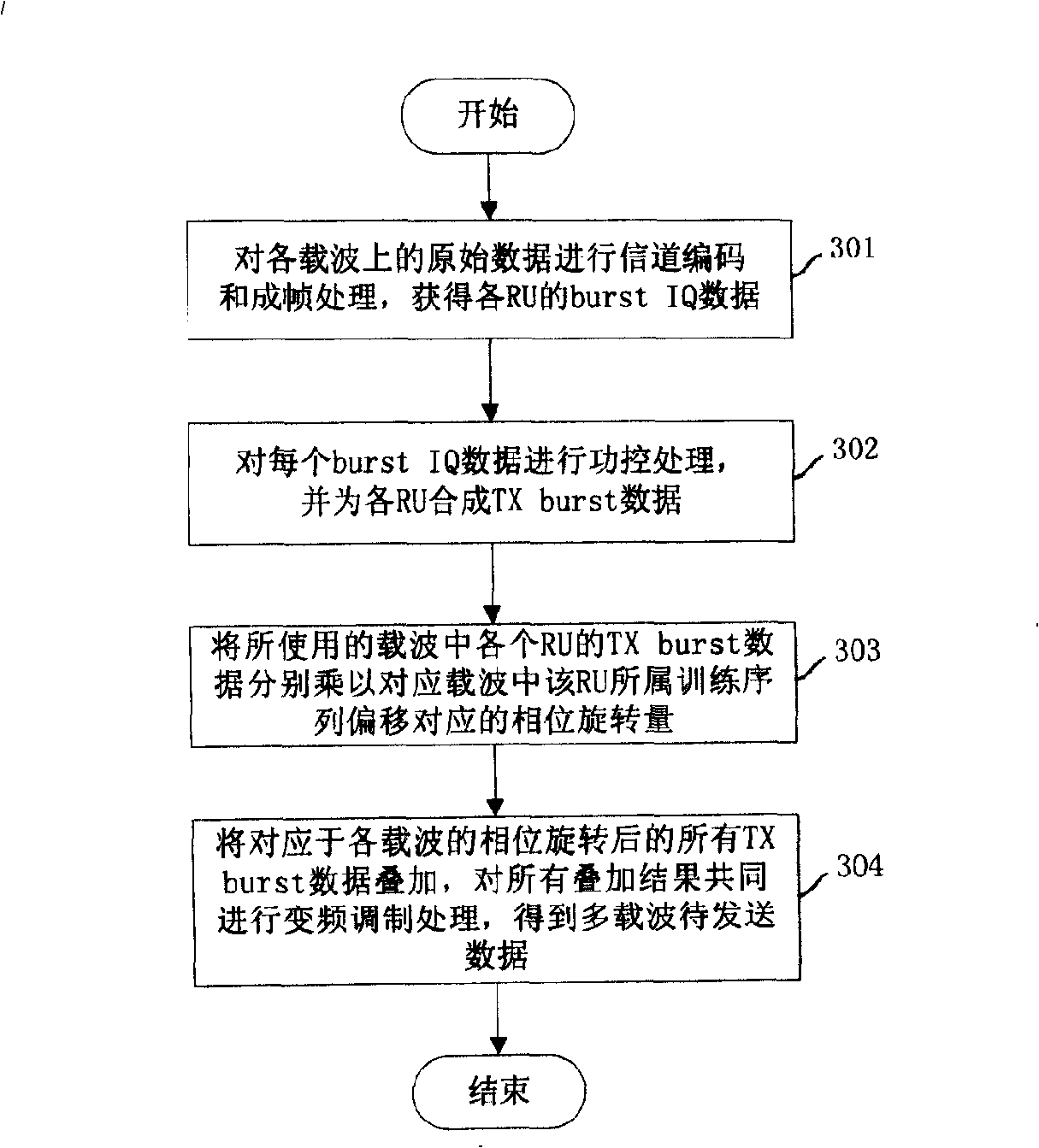A modulation processing method and transmission device for transmitting data in multi-carrier system
A multi-carrier system, a technology for transmitting data, applied in multi-frequency code systems, diversity/multi-antenna systems, transmission control/equalization, etc., can solve network planning difficulties, cell identification difficulties, and inability to reduce TD-SCDMA multi-carrier systems. PAR and other issues to achieve the effect of facilitating network planning and system operation, reducing PAR, and reducing PAR value
- Summary
- Abstract
- Description
- Claims
- Application Information
AI Technical Summary
Problems solved by technology
Method used
Image
Examples
Embodiment 1
[0061] In this embodiment, the TD-SCDMA multi-carrier system is a single-antenna mode. In order to facilitate phase rotation processing, this embodiment presets the phase rotation amount corresponding to each training sequence offset, for example, establishes a correspondence table between the training sequence offset and the phase rotation amount.
[0062] image 3 A flow chart of the method for processing transmission data modulation in this embodiment is shown. see image 3 , the method includes:
[0063] In steps 301-302, channel coding and framing processing are performed on the original data on each carrier to obtain the burst in-phase quadrature (burst IQ) data of each RU; and power control processing is performed on each burst IQ data, for Each RU synthesizes TX burst data.
[0064] In the TD-SCDMA multi-carrier system, RU represents the wireless resources on a code channel, usually each carrier has 16 RUs; the training sequence offset represents the cyclic shift m...
Embodiment 2
[0081] In this embodiment, the TD-SCDMA multi-carrier system is in the smart antenna test mode. The so-called smart antenna test mode refers to the TD-SCDMA multi-carrier system that adopts the smart antenna mode simulated in the laboratory for test purposes. Similar to Embodiment 1, in order to facilitate phase rotation processing in this embodiment, a corresponding phase rotation amount is set in advance for each training sequence offset, for example, a correspondence table between training sequence offset and phase rotation amount is established.
[0082] Figure 7 A flow chart of the method for transmitting data modulation processing in this embodiment is shown. see Figure 7 , the method includes:
[0083] In steps 701 to 703, channel coding and framing processing are performed on the original data on each carrier loaded by analog to obtain the burst IQ data of each RU; power control processing is performed on each burst IQ data to synthesize a TX burst for each RU da...
PUM
 Login to View More
Login to View More Abstract
Description
Claims
Application Information
 Login to View More
Login to View More - R&D
- Intellectual Property
- Life Sciences
- Materials
- Tech Scout
- Unparalleled Data Quality
- Higher Quality Content
- 60% Fewer Hallucinations
Browse by: Latest US Patents, China's latest patents, Technical Efficacy Thesaurus, Application Domain, Technology Topic, Popular Technical Reports.
© 2025 PatSnap. All rights reserved.Legal|Privacy policy|Modern Slavery Act Transparency Statement|Sitemap|About US| Contact US: help@patsnap.com



